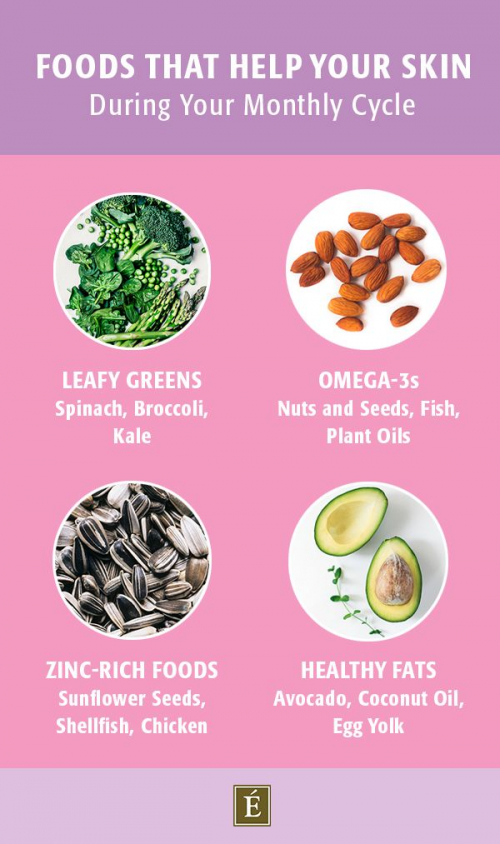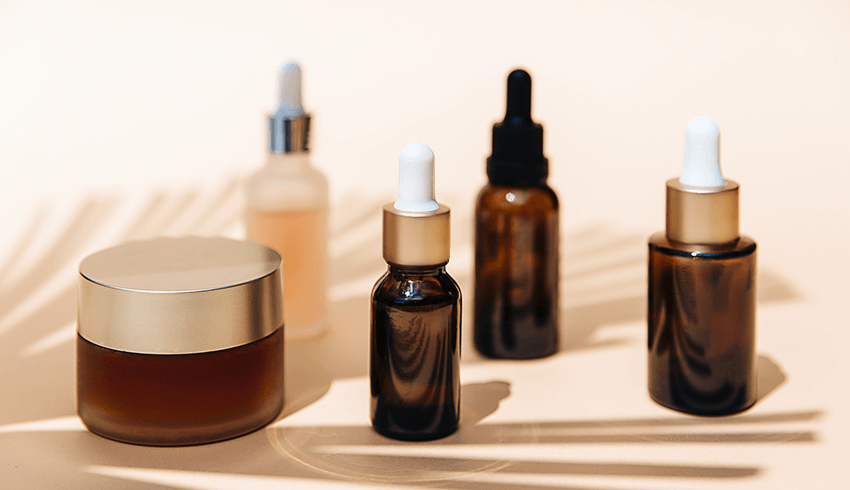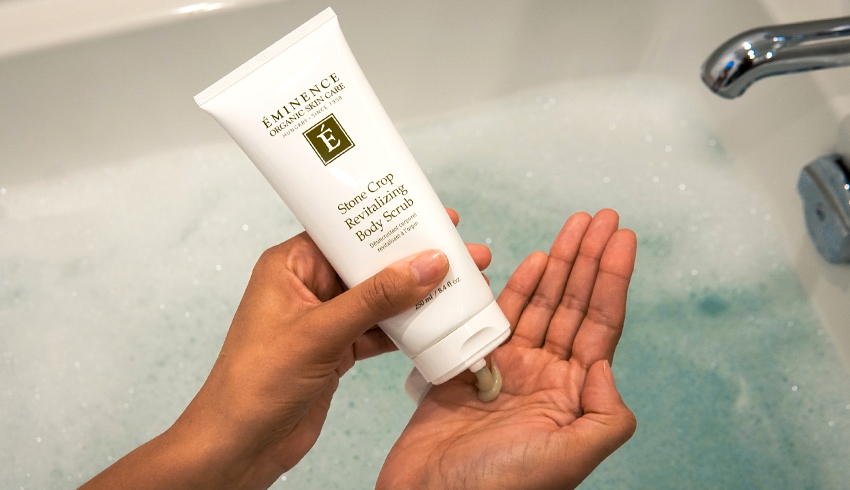
You’re bloated, cranky and to top it off, your skin’s an unholy mess. Welcome to the mysteries of your monthly cycle and the effect of hormones on your skin. On certain days of the month, your complexion glows with health; other days, you find yourself fighting the worst case of hormonal acne. Want to predict which days your skin will be gorgeous or grotesque? Here’s how to track hormonal skin changes and treat your skin according to your monthly cycle.
Hormones 101
Three hormones impact your skin during your monthly cycle: Estrogen, progesterone and testosterone. These hormones fluctuate through the duration of your cycle, and their shifting ratio is what causes changes in the look and feel of your skin.
Estrogen
Estrogen is the predominant hormone in the first half of your monthly cycle. This hormone stimulates the production of collagen, elastin and hyaluronic acid, thereby impacting your skin’s structural integrity and moisture retention. When estrogen is at its peak, your skin looks and feels plump, hydrated and wrinkle-free.

Progesterone
In the second half of your cycle, progesterone rises. Progesterone stimulates the production of sebum and, as it rises, causes your skin to swell and compress your pores. This compression can lead to a build-up of oil and hormonal breakouts.
Testosterone
Testosterone remains constant throughout your cycle and takes the lead when estrogen and progesterone dip during menstruation. Like progesterone, testosterone activates the sebaceous glands, triggering them to produce more oil. The result: Excess sebum and clogged pores, both of which contribute to acne during your period.
What To Expect During Your Cycle
During your monthly cycle, it may seem like your skin has a mind of its own. However, its seemingly mysterious patterns are often related to your hormone levels. Here’s what you can expect from your skin during a 28-day cycle.
Days 1-6
On the first day of your period, all of your hormones are at an all-time low. Sebum production may decrease, and without the help of estrogen, your skin may have difficulty retaining moisture. As a result, your skin will likely look and feel dull, dry and lackluster.
During this first week, your body also produces more prostaglandins. These compounds with hormone-like effects usually control inflammation but, when off balance, increase pain sensitivity. This can cause your skin to feel more tender and reactive.
Skin Care Tip: Your skin feels sensitive, so stay away from painful procedures like waxing. It’s also incredibly dry and can benefit from rehydration with a serum or moisturizer rich in hyaluronic acid.
Days 7-11
During this time, your body restarts estrogen production. This process stimulates collagen, elastin and hyaluronic acid creation, encouraging the growth of stronger and more elastic skin cells. As your skin cells turnover, your complexion feels more plump, fresh and youthful.
Skin Care Tip: Focus on exfoliation during these days. New skin cells are forming, and it’s a fantastic time to amp up the turnover process. Try a gentle physical or chemical exfoliant to remove dead cells from your skin’s surface and reveal the healthy skin underneath.

Days 12-16
Right before ovulation, estrogen is at its peak and your skin looks sensational. During this time, moisture levels are high, pores appear smaller and the increase in collagen and elastin is working wonders (hello, radiance).
Skin Care Tip: Now is not the time to sit pretty! Boost your body’s natural hike in collagen production with solutions that reduce the visible signs of aging. Reach for products containing natural retinol alternatives and botanical peptides to keep skin bouncy and youthful.
Days 17-24
After ovulation, estrogen levels plummet and progesterone starts to rise. The surge in progesterone activates sebum production and causes your skin to swell and pores to compress. While this makes your pores look teeny tiny (yay), it also traps oil and causes buildup that can lead to breakouts (yuck).
Skin Care Tip: Add a clay mask to your skin care routine to soak up excess oil and draw impurities from deep within your pores.
Days 25-28
You’re entering full-blown PMS territory and possibly suffering from hormonal acne symptoms. Progesterone and estrogen dip below the level of testosterone, causing bloating, puffiness and an oversupply of oil. Your skin may appear extra shiny and, as your pores loosen, they may begin to look larger. Oil residing within your pores can mix with acne-causing bacteria and lead to an eruption of hormonal breakouts across your chin and jawline.
Skin Care Tip: Two words: Salicylic acid. This beta-hydroxy acid (BHA) clears blockages, kills bacteria and prevents future breakouts.
How To Tackle Hormonal Acne
Hormonal acne is a struggle for more than fifty percent of women. It typically emerges in adulthood and can be triggered by the menstrual cycle’s hormonal highs and lows. Hormonal breakouts are deep, and painful cysts that tend to appear on the lower third of the face where the androgen spikes have the most impact. Two ways to fight hormonal acne is internally (diet) and externally (skin care).
Diet
You can help hormonal skin by limiting your intake of inflammation-causing foods like sugar, dairy and refined carbohydrates. You can also add foods that combat excess androgens to your diet, like healthy fats, Omega-3 fatty acids, leafy greens and items with high zinc content.

Skin Care
If you struggle with hormonal acne, our Eminence Organics Product Support Team recommend the Acne Advanced Treatment System.
The Acne Advanced Collection’s encapsulated salicylic acid helps to balance skin and improve the look of hormonal breakouts and keep skin fresh, clear and healthy-looking, no matter the time of the month.
Product Picks
What changes do you see in your skin during your cycle? Share your skin concerns with us in the comments below and join the conversation on social media.




